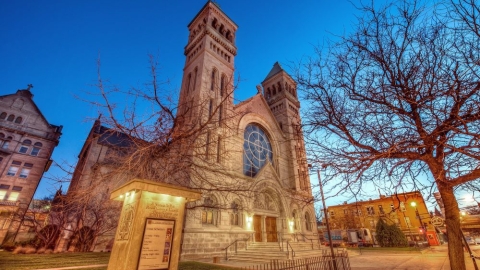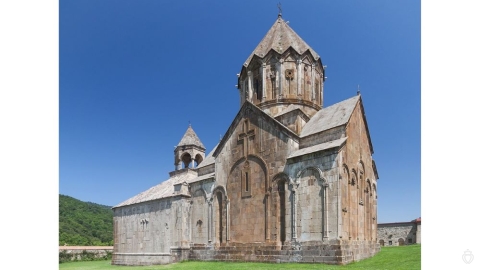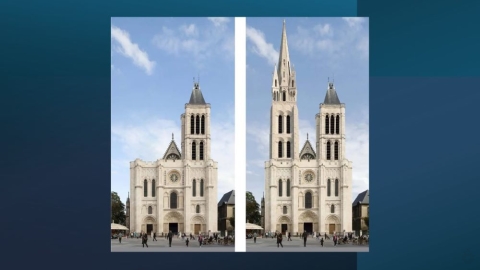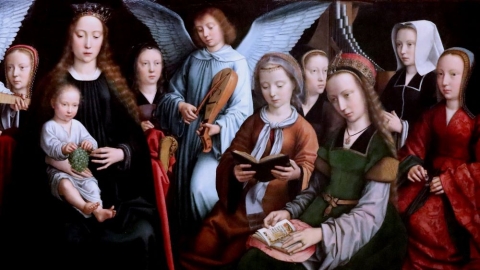Our Lady of Walsingham
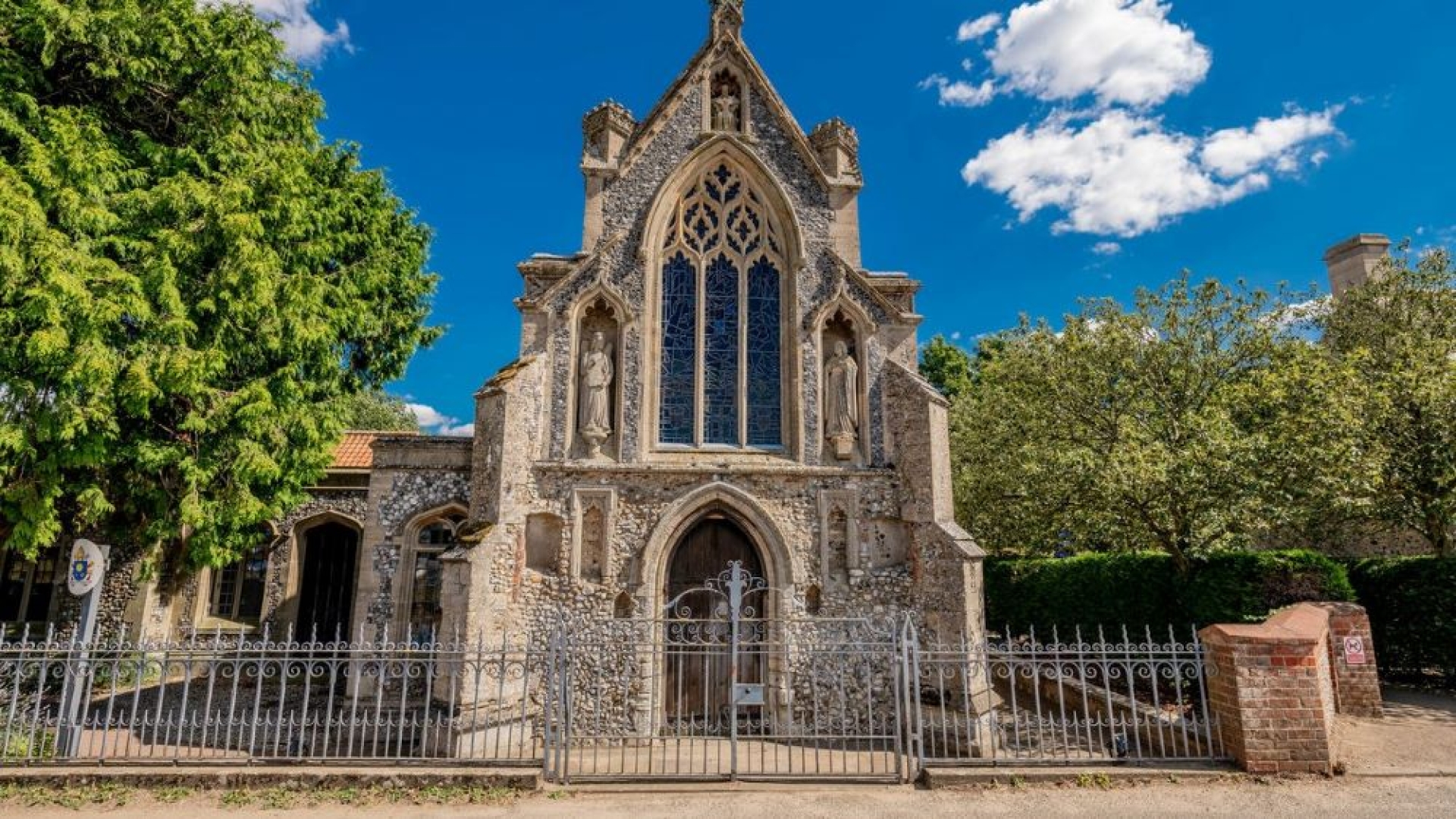
Slipper Chapel
Walsingham Shrine is one of the oldest places in England dedicated to the Mother of God. It has known vicissitudes, but, for a century, it has regained a beautiful vigor and a great influence.
History of the sanctuary
Around 1061, in Walsingham lived a pious widow, Lady Richeldis, very devout to the Virgin and who wanted to serve her. In response to her prayer, three times the Virgin showed her the House of the Annunciation, and asked her to build a replica of it on her Walsingham estate.
Lady Richeldis hastened to carry out her instructions and have a house built similar to her vision. After laying the foundation, nothing the workmen could do would make the foundations fit the house, labor how they might. By sunset the task was no nearer completion than in the morning, so that, at last, they went home.
Lady Richeldis spent the entire night in prayer. And in answer, Angels came and finished the job. The workmanship was far superior to that of the craftsmen. The result of a vision, the new Nazareth, the most famous sanctuary in England before the Reformation, was thus installed in a remote corner of Norfolk.
Later, the son of the foundress, Sir Geoffrey de Favarches, before leaving for Jerusalem, donated land for the support of the chapel and the foundation of a religious house.
The Nazareth of England
Walsingham quickly acquired a great reputation as a holy place where prayers were answered and diseases cured. The ancient wooden statue of the Virgin Mary with the infant Jesus welcomed pilgrims. In 1281, Edward I made a pilgrimage of thanksgiving for a miracle performed by Our Lady of Walsingham.
Between 1061 and 1538, hundreds of thousands of pilgrims from all over Europe came to this sanctuary. The road to Walsingham was lined with pilgrim chapels. The Milky Way was renamed the Walsingham Way, pointing across the heavens the route to England’s Nazareth in the Holy Land of Walsingham.
The destruction of the sanctuary
On September 18, 1534, the Canons of Walsingham signed the Act of the King’s Supremacy, and in June 1538 the statue of Our Lady of Walsingham was dragged to London to be burned. On August 4, 1538, the Priory was confiscated and the Holy House torn down. But that did not prevent the Virgin Mary from continuing her favors to her devotees.
For three centuries Walsingham slept. Successive generations took the stones from the church to build their houses. It is not to be wondered at that in an age of unfaith these things should have been so.
“When England returns to Walsingham, the Virgin will return to England”
In the last decade of the 19th century, Miss Charlotte Boyd, an Anglican, installed some Anglican sisters in a small 14th century chapel on the outskirts of Walsingham. It was the last of the chapels on the pilgrim route, traditionally known as “The Slipper Chapel.”
Miss Boyd decided to purchase the chapel, but before she had completed the purchase, she was granted the gift of faith and was received into the Church. Meanwhile, devotion to Our Lady under her Walsingham title was already being revived at the nearest Catholic Church to Walsingham, St. Mary's, King's Lynn, of which parish Walsingham then formed a part.
In 1897, the faithful, led by two priests, made a pilgrimage to the Slipper Chapel, resuming the pilgrimage interrupted since the 16th century. Miss Boyd donated the chapel to the Benedictines of Downside.
On August 19, 1934, 400 years after the national apostasy, Cardinal Francis Bourne, Archbishop of Westminster, and many members of the hierarchy of England and Wales, led a great pilgrimage of reparation bringing together more than 12,000 pilgrims in Walsingham, in the restored Shrine in the Slipper Chapel.
On July 2, 1950, a temporary church in honor of the Annunciation was formally opened at Walsingham to serve pilgrims, until the day when the many pilgrimages of reparation shall bear fruit and England makes restitution by rebuilding and restoring to Our Lady her Holy House of the Annunciation.
Perhaps the greatest day ever witnessed in Walsingham was the Feast of the Assumption in 1954, when the apostolic delegate, in the name of the Holy Father, and in the words of Bishop Parker, “restored to the brow of our National Madonna the Crown filched from Her by Henry VIII.” This magnificent Marian Year ceremony was acclaimed by more than 15,000 pilgrims standing amidst the ruins of the ancient Priory.
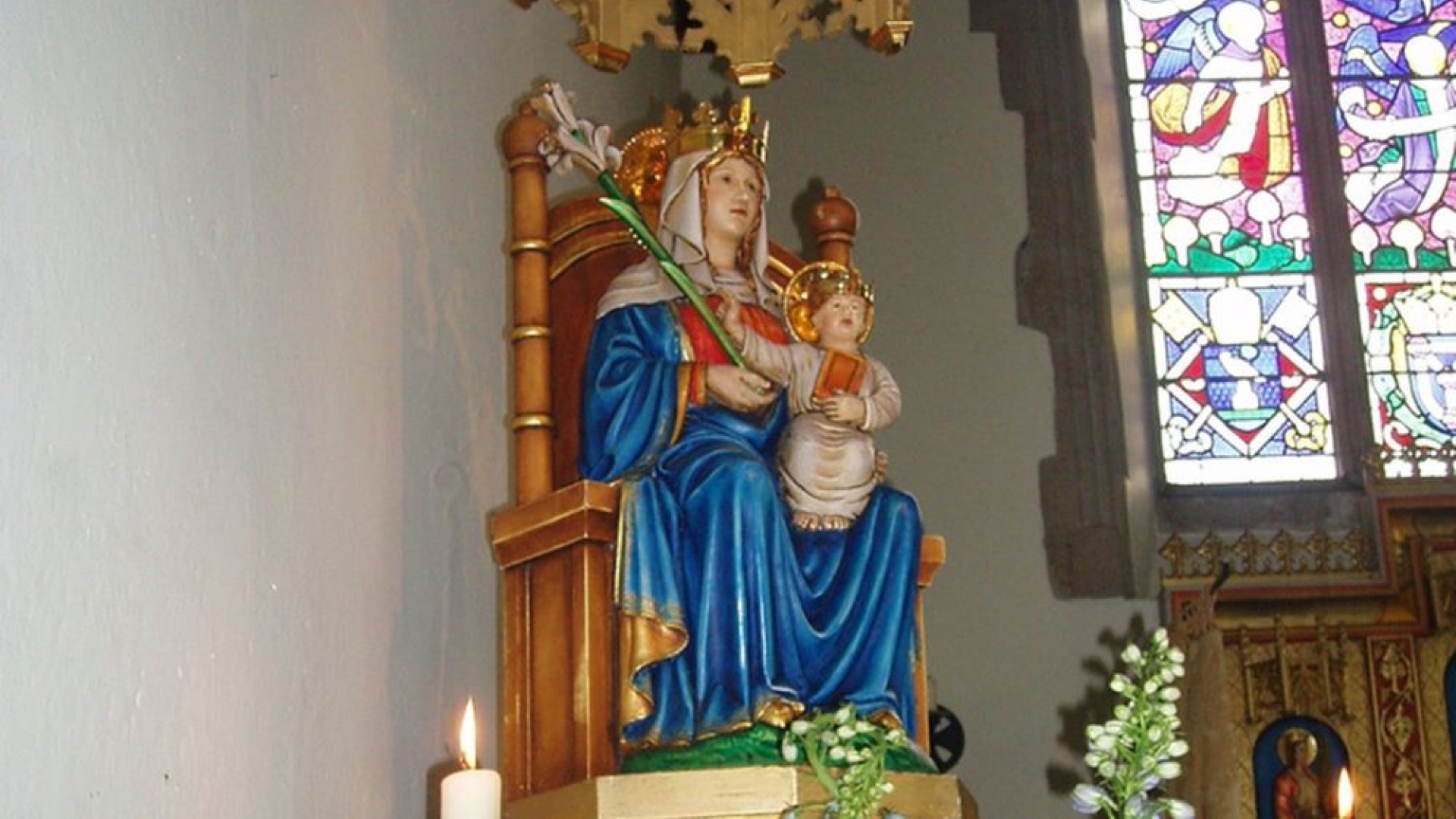
Statue of Our Lady of Walsingham, venerated in the Slipper Chapel
(Source: SSPX Great Britain – FSSPX.Actualités)
Illustration 1 : © explorewestnorfolk.co.uk
Illustration 2 : Saracen78 at English Wikipedia, CC BY-SA 3.0, via Wikimedia Commons
